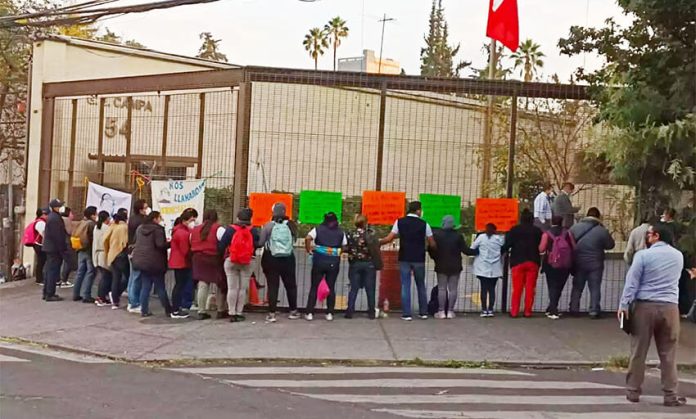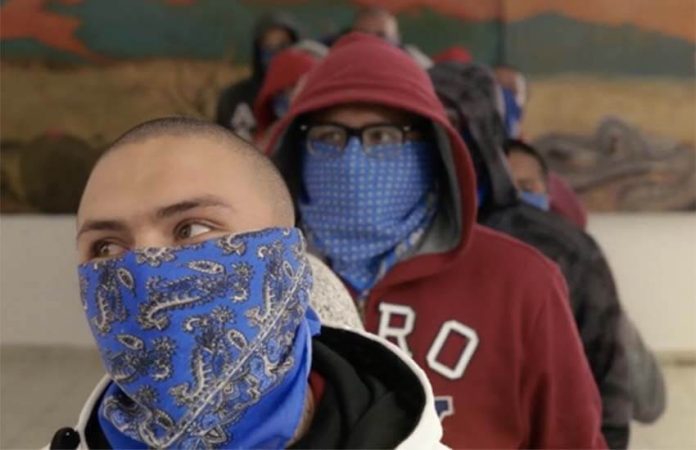A 16-year-old boy in a youth detention center reenacts the brutality of gang life and his torture by authorities. A mother whose daughter is kidnapped by a drug cartel launches a one-woman vigilante effort. Actors embedded in the Mexico City police force discover the vicissitudes of police authority. In the Sonora desert, a young journalist tries to reveal the links between corruption, environmental devastation and impunity that enable illegal gold mining and the harassment and murder of landowners.
These four films — Adrenalina (Adrenaline), La Civil, (The Civilian), Una Película de Policías (A Cop Movie) and Tolvanera (Dustcloud) respectively — are examples of a key trend in Mexican filmmaking: they are films about the major calamities facing Mexico today, such as organized crime, state violence, forced disappearances, deadly violence against women, internal displacement, near-total impunity for crime and forced migration, topics that more Mexican writers and directors are taking on in their work.
And these creators are not interested simply in provoking discussion but also action: most of these films have been paired with social impact campaigns, an increasing practice designed to generate political and social pressure and contribute to the achievement of justice in a country where state authorities and formal legal and social processes can rarely be relied on.
The production company for the 2018 Oscar-winning Alfonso Cuarón film Roma, for example, held a campaign to support domestic workers in Mexico after its story of the fictional Cleo, an indigenous maid working for a rich family in the 1970s, raised awareness of ongoing exploitative conditions for domestic workers in Mexico.
For the documentary short Adrenalina, directors Alberto Arnaut and Diego Rabasa teamed up with Documenta, a Mexican nongovernmental organization that supports young people imprisoned within Mexico’s youth justice system. The 30-minute short shows young people talking about being caught up in organized crime, working as sicarios (assassins) and drug runners and then enduring the consequences of being arrested and imprisoned in an equally violent system.
Trailer for the film
La Civil by Teodora Mihai.
A 16-year-old in the film describes his experience being arrested and detained, saying, “It’s not like they just capture you. They catch you and they torture you. You see things others don’t see. They make you suffer, and they treat you like a dog.” The film also shows Documenta’s work in the youth detention center, as advocates hold theater workshops and other activities aimed to encourage the young prisoners to take responsibility for their actions, understand the cycles of violence and impunity that blights much of Mexican urban life and start their lives again after prison.
The drama La Civil was not attached directly to an NGO or an impact campaign but sought a more general amplification of its themes by telling the story of Cielo, a mother whose daughter is kidnapped by a drug cartel that fails to return her even after Cielo pays the ransom.
The plot is modeled on the real story of Miriam Rodríguez who, through an extraordinary solo mission of some six years, successfully tracked and captured several members of the drug cartel that kidnapped and murdered her 20-year-old daughter Karen before Rodríguez was killed outside her home on Mother’s Day, 2017.
A high-profile production involving luminaries such as Michel Franco — director of 2020’s class warfare drama New Order — as well as a screening at Cannes this past July, La Civil has many of the major tropes and figures of Mexico’s real-life social drama: clandestine mass graves, community-based searchers and forensics analysts, rogue authorities and steely, grieving mothers, fighting to find their disappeared children.
Alonso Ruizpalacios’ Una Película de Policías takes on the ambivalent task of showing the inside world of Mexico City cops who, like their counterparts throughout the country, are well-known for corruption and violence, running enforcement for criminal groups that extort businesses and kidnap and torture civilians. The job itself is also rather deadly — as the NGO Causa en Común reports: just this year some 350 police officers in Mexico have been killed.
The film — which skirts dizzyingly around genres, including docudrama, action film and mockumentary — combines a compelling romantic and professional real-life police partnership and the immersion of two somewhat skeptical actors (Mónica Del Carmen and Raúl Briones) into police training in unexpected ways, in the process revealing the world of the Mexico City police force, where officers have disparate duties, somewhat unclear direction, minimal schooling, exposure to hatred and violence and the kind of brotherly comradeship that law enforcement forces the world over are known for.
Trailer for Alonso Ruizpalacios’ genre-bending film
A Cop Movie.
The film’s chaotic portrayal of capital law enforcement reflects real-life criticisms: last year, a Human Rights Watch report urged Mexico to overhaul its police forces, noting that they are “infamous for their corruption, their use of torture and violence, and their ties to organized crime.”
Producer Elena Fortes told the media outlet Indiewire that “the project was born both as a work of art but also as an impact campaign to ignite new conversations regarding how Mexican society interacts with the police.”
A.R. Melgoza’s documentary Tolvanera brings together several matters of social justice as the young director and journalist traces the story of communal landowners in the community of El Bajío, located in the Sonora desert, who have been subject to violence on the mining site on their land, including the recent murders of environmental activists José de Jesús Robledo Cruz and María de Jesús Gómez Vega.
The documentary chronicles the landowners’ battle with the Mexican mining company Minera Penmont as well as Melgoza’s own attempts to explain the legal, social, cultural and political forces that have allowed the company to continue mining for gold on communally-owned land without the landowners’ permission. It also documents Melgoza’s efforts to stay alive in the process of making his film.
Tolvanera is produced along with the El Bajío landowners and has also been promoted by the Mexican Network of People Affected by Mining, generating widespread awareness and support for the landowners in their fight against the mine.
Films such as this, deliberately aimed at making a social impact, are fast becoming the new normal in Mexican filmmaking. This is perhaps hardly surprising: the scale of social destruction and pain related to the war on drugs (350,000 deaths and 72,000 disappearances over the past 15 years) in Mexico, the domination of repressive foreign policy and the economic wreckage of global neoliberal capitalism all beg the need for social support and accompaniment, the fomentation of collective hope and the building of routes to justice and accountability that leave the rotten structures of the state and organized crime behind.
Trailer for A.R. Melgoza’s documentary Tolvanera.
Against this scene, storytelling on international screens may well carry the best hope for justice in Mexico, making the growing movement of social impact films one to watch.
Mexico News Daily









